Tuesday, May 19th, 2009
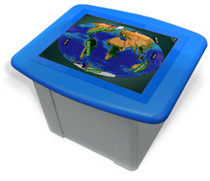
It’s often been cited that if one were to go back in time 100 years to visit a classroom one would see no difference between that classroom of yesteryear and that of a classroom today. While indeed there are many similarities between the two classrooms, there are some major differences. First, a difference that cannot be seen is the many bits and bytes floating in the air of classrooms today thanks to wireless computing technologies. Second, the surfaces within a classroom are turning into interactive screens. As many technologists within the ed publishing space are certainly aware of, the interactive whiteboard is growing in popularity. I see a trend that has yet to occur related to these new interactive technologies that can be seized on today.
Currently, interactive whiteboards (IWBs) are being used at the front of a class for instruction that just a year or two ago occurred on a blackboard or with an overhead projector. Could you imagine a classroom where each student had their own netbook on their desk that could interact with an IWB in real time? Also, looking one step beyond netbooks, recently SMART Technologies announced its new interactive surface product, the SMART Table, which could very easily lead many similar manufacturers to convert student desks into interactive desks within a few short years. How can publishers take advantage of this opportunity that is almost visible on the horizon?
A number of new products can be defined to not only take advantage of IWB instruction, but to facilitate learning through two-way conversations between IWB and interactive desktop. Such functionality could result in the next “must have†learning product. Such products would allow all students to participate in the digital instruction, alongside the teacher, in real time. Also, if every student could interact from the comfort of his/her own desk, teachers could also monitor student progress from afar either in real time or after the class day has ended. Teachers could also scan student efforts from the IWB, and project a student’s work in much the same way Timbuktu technology allowed years ago, displaying a student’s interactive table on the IWB for everyone to see.
Another yet to be explored opportunity by publishers relates to classroom use of IWB altogether. For some instructors, the art of teaching can be a linear process and for the most part, delivered as a one-way conversation to students. Interactivity begs for participation. My greatest fear with IWB materials is that teachers will use the technology to deliver content in a similar manner to using an overhead projector. IWBs allow for an interactive opportunity that is a two-way or participitory conversation, or at very least, a one-way conversation that can branch off in many directions based on student needs. What publishers are doing today with IWBs is similar to when radio professionals tried applying their expertise to television in the early days of the new medium. Content creation sensitivities for radio did not automatically port to television, and as a result, many mistakes about how best to use the medium were made. It wasn’t until the invention of the three-camera shoot and many additional “formal features†that the medium of television began to succeed as a means to communicate. What happened in these early days of television is also occurring today with IWBs and most surface computing.
What I’m noticing while my own company is defining and developing IWB products for publishers is that experimentation, user testing, and research are areas soon to evolve in this fast growing space of ed tech. Simply converting print material into PDFs as a solution for successful IWB products doesn’t fully exploit the interactive teaching possibilities that can be found with these new devices and doesn’t create the best value for the classroom dollar. True product successes will occur when publishers think outside the blackboard and outside the overhead projector to create a product that has more to do with the language of interactive engagement and less to do with that of linear print.


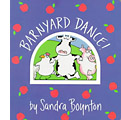 A delightful rhyming story of barnyard friends that go to a dance. The rhythm and meter of this story will keep you reciting sections from this book for days on end. Another great find for our family was discovering that there’s a Sandra Boynton CD available with this book’s lyrics set to song.
A delightful rhyming story of barnyard friends that go to a dance. The rhythm and meter of this story will keep you reciting sections from this book for days on end. Another great find for our family was discovering that there’s a Sandra Boynton CD available with this book’s lyrics set to song.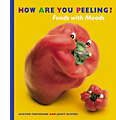 Elffers is a fantastic photographer with a talent for bringing personality and emotion out of common everyday fruits and vegetables. Each page is filled with wonderful facial expressions from his creations. Light copy, lots of unique and interesting faces to enjoy.
Elffers is a fantastic photographer with a talent for bringing personality and emotion out of common everyday fruits and vegetables. Each page is filled with wonderful facial expressions from his creations. Light copy, lots of unique and interesting faces to enjoy.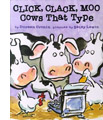 Farmer Brown runs a no-nonsense farm, but things change once the cows who live there acquire an old typewriter and learn how to express there wishes on short notes. When Farmer Brown doesn’t comply with the cows requests, the cows decide they will go on strike. Fun, fun. fun!
Farmer Brown runs a no-nonsense farm, but things change once the cows who live there acquire an old typewriter and learn how to express there wishes on short notes. When Farmer Brown doesn’t comply with the cows requests, the cows decide they will go on strike. Fun, fun. fun!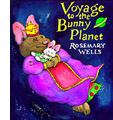 There are so many great books written by Rosemary Wells that it’s hard to pick even just a few, but the Bunny Planet books (a small collection of three books sold together as a set) have a wonderful Zen-like story quality to them. Ms. Wells explores the idea of a perfect world that lives inside our heads when things outside don’t go quite as well as we had planned.
There are so many great books written by Rosemary Wells that it’s hard to pick even just a few, but the Bunny Planet books (a small collection of three books sold together as a set) have a wonderful Zen-like story quality to them. Ms. Wells explores the idea of a perfect world that lives inside our heads when things outside don’t go quite as well as we had planned.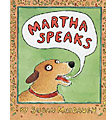 The story of a family dog named Martha who likes to eat alphabet soup. The interesting twist in the story is that when Martha eats the soup, the letters go up to her brain instead of down to her tummy! There are many Martha Speaks books available and the first is the one that sets up the story for the entire series.
The story of a family dog named Martha who likes to eat alphabet soup. The interesting twist in the story is that when Martha eats the soup, the letters go up to her brain instead of down to her tummy! There are many Martha Speaks books available and the first is the one that sets up the story for the entire series.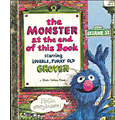 I think everyone in the entire world loves Grover, the fuzzy blue character from Sesame Street. In this story, Grover asks, even begs, the reader not to turn the pages of this book because he’s afraid there’s a monster that might scare him on the very next page. You will read this one again and again with your young child.
I think everyone in the entire world loves Grover, the fuzzy blue character from Sesame Street. In this story, Grover asks, even begs, the reader not to turn the pages of this book because he’s afraid there’s a monster that might scare him on the very next page. You will read this one again and again with your young child.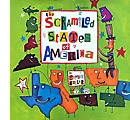 What would happen if each state in the nation could move to a new location? This book explores the fun and mayhem that ensues when each state moves to where they think they would really enjoy living. A funny story for children who are learning to memorize the US states.
What would happen if each state in the nation could move to a new location? This book explores the fun and mayhem that ensues when each state moves to where they think they would really enjoy living. A funny story for children who are learning to memorize the US states.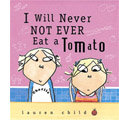 This is the first book that began the popular Charlie and Lola series of books and television shows. Lola is a very finicky eater. Her older brother Charlie presents familiar foods with funny names and stories that make Lola curious about what she might be missing. Just where do peas and fish sticks come from? And what sort of story would you tell to make eating these items more appealing?
This is the first book that began the popular Charlie and Lola series of books and television shows. Lola is a very finicky eater. Her older brother Charlie presents familiar foods with funny names and stories that make Lola curious about what she might be missing. Just where do peas and fish sticks come from? And what sort of story would you tell to make eating these items more appealing? The Owly book series are a charming collection of graphic novels starring an owl and his woodland friends. Together they go on many adventures, making new friends and helping other animals and friendly insects along the way. These books require a parent to imagine and invent the dialog alongside the visuals which I believe fosters an even closer story telling experience between reader and child.
The Owly book series are a charming collection of graphic novels starring an owl and his woodland friends. Together they go on many adventures, making new friends and helping other animals and friendly insects along the way. These books require a parent to imagine and invent the dialog alongside the visuals which I believe fosters an even closer story telling experience between reader and child.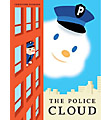 The graphic design approach to this story is just beautiful. Christoph Nieman is an artist for the New Yorker magazine and now shares his visual talents as a children’s book author. Nieman tells a captivating story about a cloud that wishes to become a policeman.
The graphic design approach to this story is just beautiful. Christoph Nieman is an artist for the New Yorker magazine and now shares his visual talents as a children’s book author. Nieman tells a captivating story about a cloud that wishes to become a policeman.
